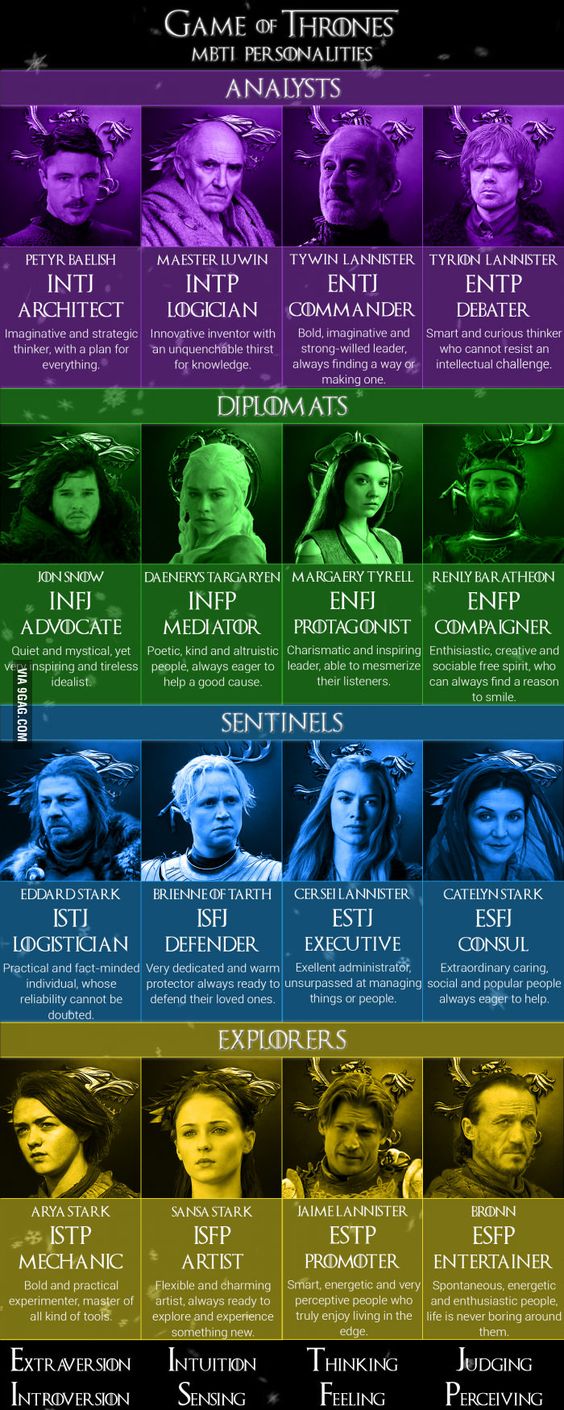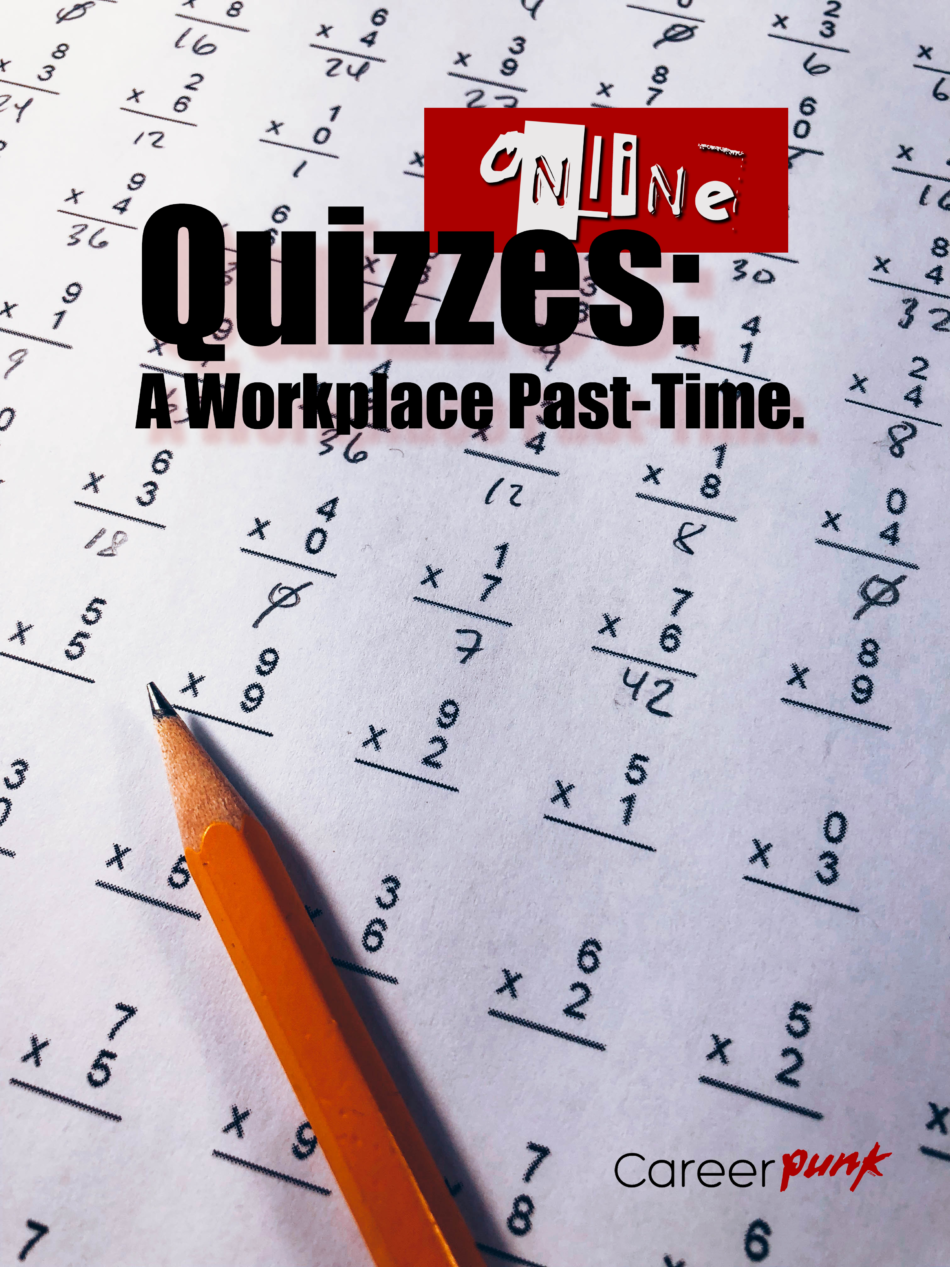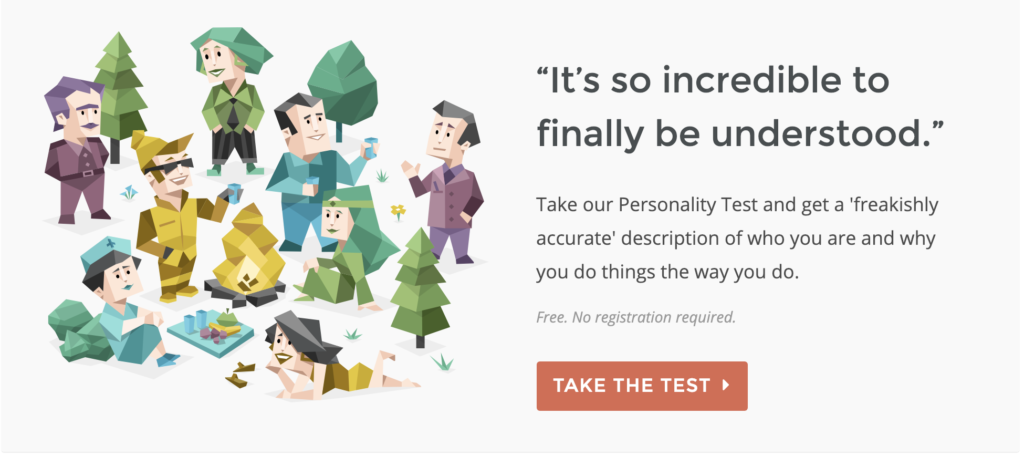Let’s face it, online quizzes are fun, addictive, and the best waste of work time this side of the equator (either side works). How would we ever survive the 3 o’clock blues without Buzzfeed or Facebook taking us deep into the territories of non-productivity and pop culture? And while there will somehow always be an innate desire to learn of things like which Harry Potter house we belong to, what Jane Austen personality we are most like, or The Name Of Your Next Lover Based On The Food You Order From McDonald’s, the productive value of these insights are slim to zero when it comes to your career success.
(If you attempted to click that McDonald’s quiz above, your “career success” is shaming you right now.)
So what if we could mash up the quiz game with actual value?
If you could give yourself a break from that daily task and still get something of career worth in return? Well ask no more, because that’s exactly what we’re doing today.
The granddaddy of all personality-type quizzes is the Briggs-Myers Test. This test was designed based on the principles of psychologist Carl Jung and taps into behavioral cues that describe one’s perception of the world, themselves within it, and their judgement and decision making processes. There are 16 decided personality types and where you fall within them can identify optimal career paths and communication styles.
The great value of taking the Briggs-Myers test (IMO) is in the insights around communication. Knowing how you naturally engage coworkers as well as how they best respond to interactions can alleviate miscommunication, confusion, tension, escalation, and drive forward your actual intended goal, whether that be simply sharing knowledge or seeking action, approval, compliance, etc.
So how do we get there? Take the test!
There are many tests out there and several are super official, all business, and professional-like that actually cost a fee to take. ($49.95 wow!) But there’s also some free options that are sound and provide a good understanding / explanation of the results. I recommend the site/link below to get started. Click the image and take the assessment now, we’ll review the impact and opportunities of your personality type after.
So now that you’ve taken the test and been been given your four letter identifier we can start breaking down types. As a reminder these four letter designations pertain to one of the sixteen different personality types outlined in the Briggs-Myers indicator schema. But first we need to know what each letter designation actually refers to. Let’s get that out of the way with the graphic below.
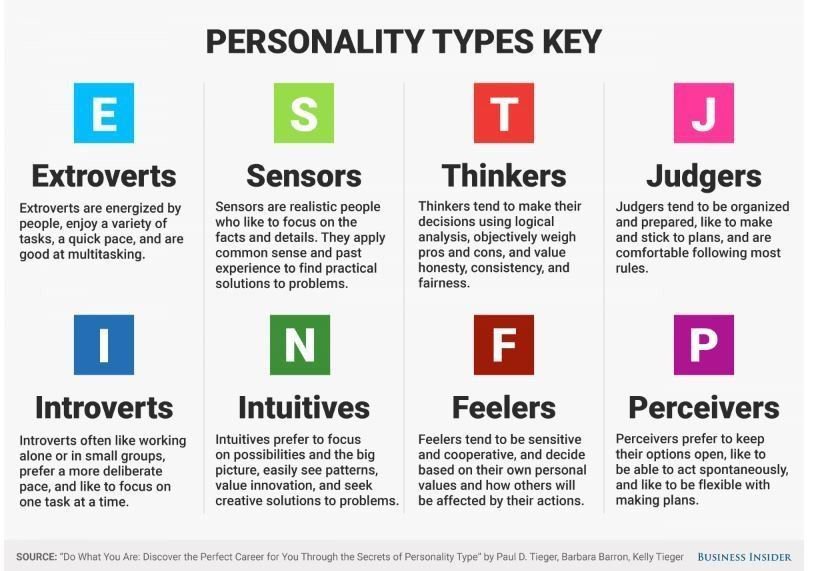
I won’t waste your time by reviewing each of the above. I trust you know how to read. And if you don’t, this sentence won’t make sense to you anyway so who cares? Now to the good stuff. Let’s review how the combinations of personality types best communicate with the other types. Credit to Martin Mulcare and Leonie Tickle of the Institute of Actuaries of Australia for the following insights. Hopefully you can leverage these techniques for your own success. Enjoy.
Best Way to Communicate with Extraverts
- Talk face‐to‐face.
- Discuss in groups, to allow interaction.
- Express interest and enthusiasm.
- Focus on action.
- Be aware of their preference for an immediate response and quick feedback.
- Be aware that they “think out loud”.
- Entertain them socially while doing business.
Best Way to Communicate with Introverts
- Communicate in writing first.
- Discuss things one‐on‐one.
- Listen, and allow space for a response.
- Provide Provide information information ahead of time.
- Allow time for reflection; don’t expect an immediate decision.
- Ensure that their valuable ideas aren’t overlooked.
- Conduct work in a work context; don’t require them to attend social functions.
Best Way to Communicate with Sensing Types
- Keep communication clear, explicit and practical; don’t use abstract language.
- Check their understanding of what you are saying.
- P t resen practi l ca , d t il d etailed plans, not concepts.
- Provide concrete examples to prove that ideas will work.
- Present information sequentially.
- Emphasise immediate, tangible results.
- Be aware that they may not find change exciting.
Best Way to Communicate with Intuitive Types
- Give a big picture overview first.
- Emphasise concepts, ideas, and innovation.
- Take a long‐term, future‐oriented perspective.
- Be willing to bi t ra ns orm out ids e‐the‐box ideas.
- Allow them to share their ideas and dreams.
- Provide facts and details only as necessary.
- Help link their ideas to a realistic plan.
Best Way to Communicate with Thinking Types
- Get straight to the point.
- Be calm, objective and demonstrate your competence.
- Be concise, cogent and logical.
- Present pros and cons.
- Use logical, not emotional, arguments.
- Focus on tasks and objectives, not only people.
- Give frank feedback, not only positive comments.
- Don’t take criticisms or challenges personally.
Best Way to Communicate with Feeling Types
- Begin with areas of agreement; connect first, challenge later.
- Create a warm, friendly, positive atmosphere.
- Use personal personal anecdotes anecdotes to create connection connection.
- Focus on the impacts of decisions on people, not only on tasks and objectives.
- Acknowledge the validity of feelings and values.
- Avoid critiquing and evaluating while listening.
- Avoid competition; aim for win‐win situations.
Best Way to Communicate with Judging Types
- Be punctual.
- Be well organised in your presentation, with a clear plan which is followed.
- Don’t present too many options; prioritise.
- Be decisive; draw conclusions quickly.
- Expect a quick decision from them.
- Stick to schedules, deadlines and timetables.
- Provide clear expectations.
- Avoid last‐minute surprises or changes.
Best Way to Communicate with Perceiving Types
- Present things in tentative, draft form.
- Describe situations rather than evaluate them; let them draw the conclusions.
- Give them a number of options. options.
- Allow time for discussion and exploration.
- Don’t force an immediate decision.
- Be open to new information and opportunities.
- Be aware that you may need to follow up
How might these identifiers impact your work?
Understanding how to communicate properly with others as well as how others can best communicate with you can improve workplace performance and productivity. Not to mention morale as well.
And as reward, you are now fully entitled to buzzfeed your boredom away with the following kitchy-cute personality charts identifying which of the 16 Briggs-Myers types you are. Carefully laid out in Disney Princess, Star Wars, and Game of Thrones style. You’ve earned it.
Disney Princesses
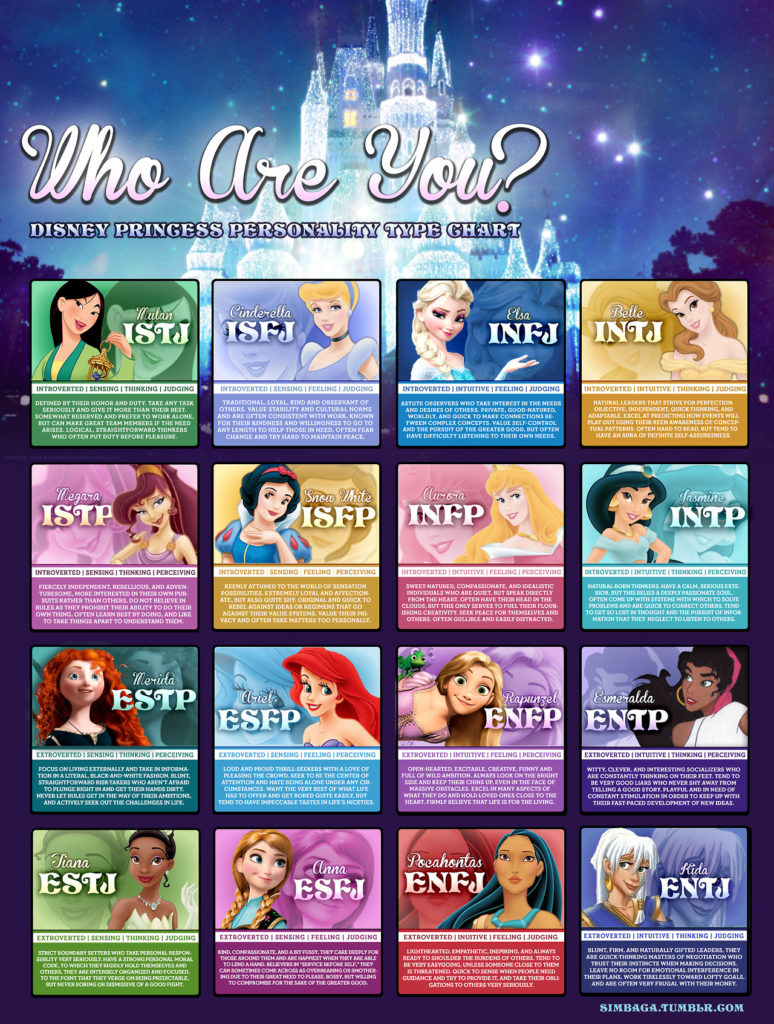
Star Wars
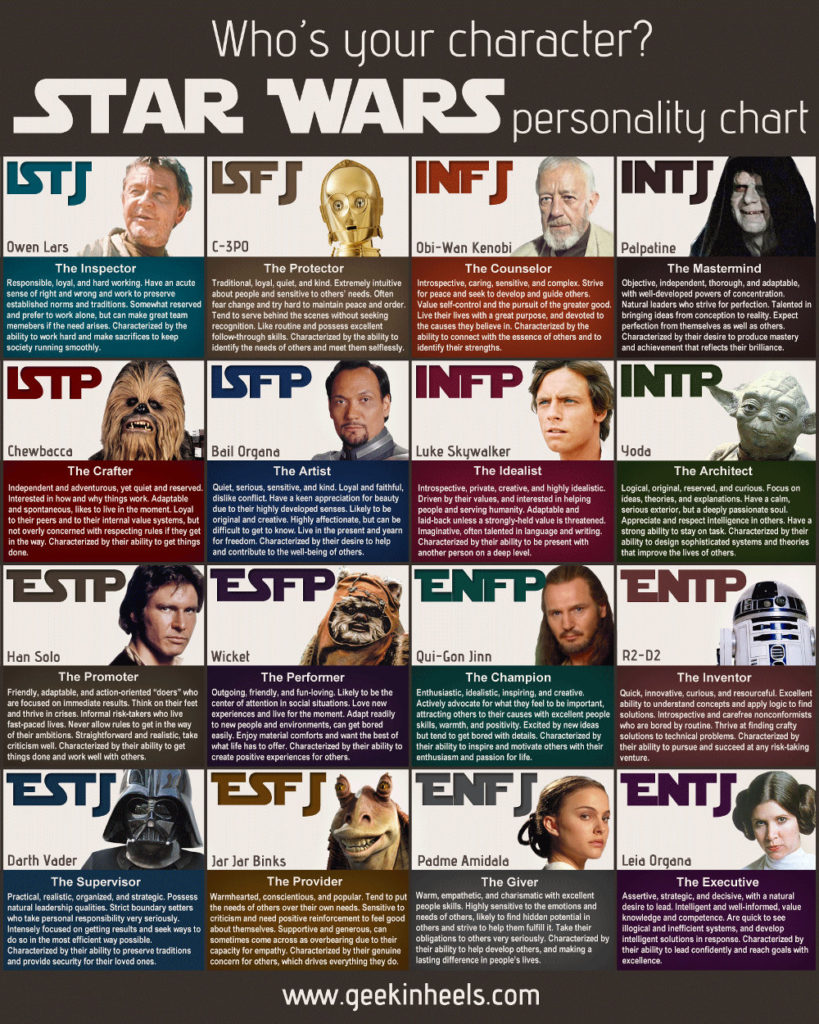
Game of Thrones
